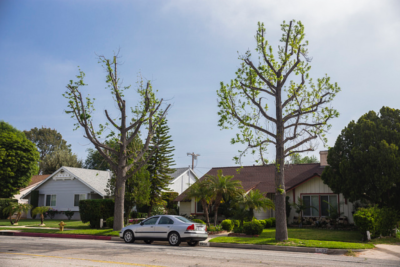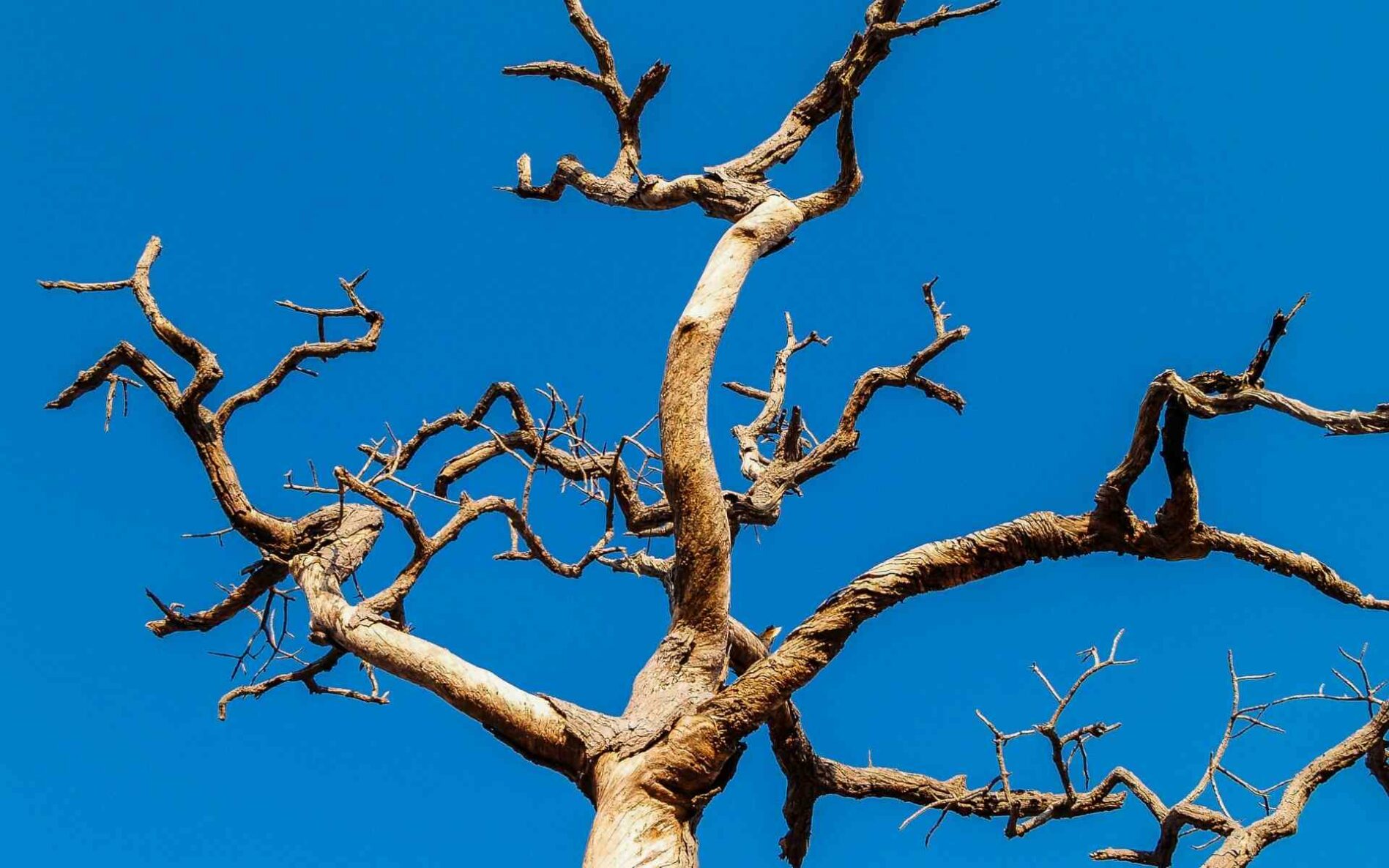Dead, diseased, damaged, or deranged – think this is not the description of a horror film character? Guess again!
At TreePeople, and in the field of arboriculture, they are known as the 4 D’s. It is the simple way to remember what to prune out of a tree to help ensure it is happy and healthy!
To Prune or Not to Prune

More often than not, trees are over-pruned. Unfortunately, most people believe that a tree must be pruned every year – like getting a haircut. Not true!
Following the 4 D’s method saves trees and plants from over-pruning, which can, in turn, lead to excessive sprouting, and more work.
The best time to do some structural pruning is when a tree is young and its branches are less than 3” thick. Structural pruning helps promote a strong formation that ensures one main “leader,” or trunk, and develops main branches that are well spaced along the dominant trunk. Other than that, most trees do not require a lot of pruning– in fact, most of the time, pruning out the 4 D’s is all that is needed. This applies to many other plants as well!
A Closer Look at the 4 D’s
Now that you know pruning doesn’t equate to a yearly haircut for trees, it’s time to become familiar with the 4 D’s and how to properly identify them.
Dead
Remove branches that are dead. Seems easy, but do you know how to tell if a branch is dead? Simply scrape away a small part of the bark. If it is alive, it will be soft and green underneath. If it is dead, it will be hard and brown.
Diseased
Sometimes this is obvious – leaves may be wilted or branches lack bark. Other times it takes more observation, such as leaves with spots or sunken branch areas that are oozing or discolored. Prune the diseased branch back to at least 6 inches below the diseased area into healthy wood.
Damaged
Broken and damaged branches open the tree up to pests and disease. Make a clean cut back to a bud on a young stem, to another branch, or remove the branch entirely.
Deranged
As branches grow they often cross and rub against each other. Choose one to keep and prune the others out.
Check out the video below to further help you identify the 4 D’s.
Do you have a friend or fellow gardener who speaks Spanish? Here is a video in Spanish that you can share with them on how to use the 4 D’s to prune plants properly.
Once following the 4 D’s, you will have a happy tree – and you can feel confident that you are not contributing to the horrors of bad pruning!
For more garden tips and tricks, visit the TreePeople Yards Info-hub!

